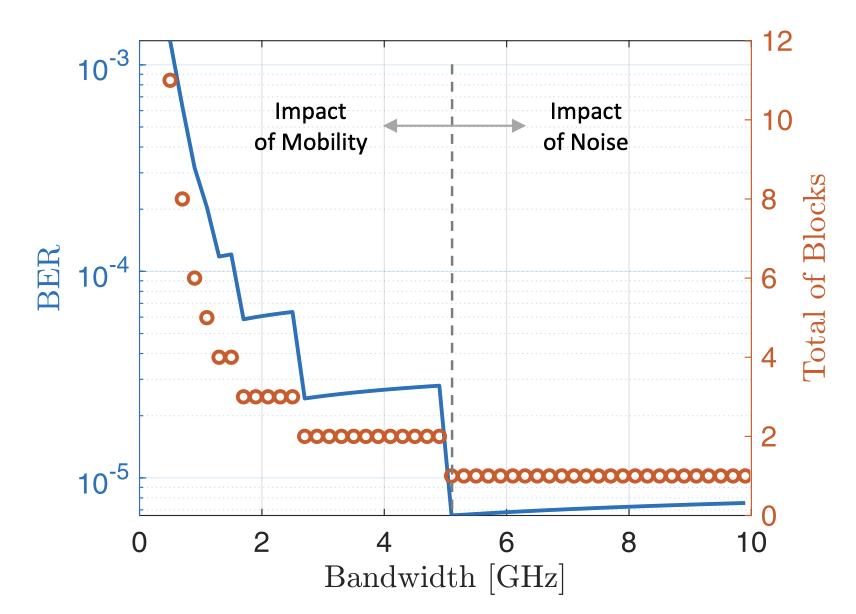Literature Database Entry
amjad2016digital
Muhammad Sohaib Amjad, "Digital self-interference cancellation in full-duplex wireless systems," Master's Thesis, Faculty of Engineering and Natural Sciences, Sabancı University, August 2016. (Advisor: Gürbüz Özgür)
Abstract
Present half-duplex (HD) wireless technologies are currently striving to meet the growing demand of high speed wireless connectivity. Recent works have demonstrated the feasibility and potential of full-duplex (FD) wireless systems to double the spectral efficiency of HD systems, which makes FD communication an attractive solution to address the present wireless spectral congestion. Self-interference (SI) cancellation is the key to FD communication and the residual SI is the major factor determining the performance of an FD radio. At the receiver of an FD system, SI suppression is achieved in two stages, first in analog domain at RF level, and then in digital domain at baseband level. Digital SI cancellation, being the last stage, plays a crucial role, as it primarily quantifies the signal-to-noise ratio (SNR) of the desired signal. In this thesis, we present a novel frequency domain approach for the reconstruction of SI signal in digital domain. For the realization and performance evaluation of the proposed and the existing time domain reconstruction approaches with different SI channel estimation algorithms, we have considered the baseband model of FD implemented on an OFDM system under time dispersive fading channel. We have evaluated the performance of digital SI cancellation techniques for such an FD system via detailed simulations and extensive tests with WARP Software Defined Radio (SDR), also analyzing computational complexity. Through the simulation and test results, it is shown that, for the AWGN channel, the amount of digital cancellation increases with increasing SNR of the received SI signal, and a maximum cancellation of 36 dB is achieved. Under fading, the SI suppression capability of all digital techniques degrades, especially with increasing delay spread. However, since the frequency domain estimation is resilient to large delay spreads, better performance is observed as compared to the time domain estimation based techniques, which are more prone to frequency selectivity. Additionally, it is demonstrated that with least square frequency domain estimate, the cancellation obtained by the proposed frequency domain reconstruction, outperforms the existing time domain approach by 5 - 10 dB, while the computational complexity is reduced to one-fourth of that required by the time domain reconstruction. Furthermore, it is observed that the SI suppression capability of the digital cancellation techniques can be improved up to 1 dB, by increasing the number of training sequence symbols, which can be achieved by slight modifications in the preamble structure. Lastly, FD operation is demonstrated on the WARP SDR set up, by applying the frequency and time domain reconstruction approaches, showing simultaneous transmission and reception of a tone.
Quick access
Contact
BibTeX reference
@phdthesis{amjad2016digital,
author = {Amjad, Muhammad Sohaib},
title = {{Digital self-interference cancellation in full-duplex wireless systems}},
advisor = {{\"{O}}zg{\"{u}}r, G{\"{u}}rb{\"{u}}z},
institution = {Faculty of Engineering and Natural Sciences},
month = {8},
school = {Sabancı University},
type = {Master's Thesis},
year = {2016},
}
Copyright notice
Links to final or draft versions of papers are presented here to ensure timely dissemination of scholarly and technical work. Copyright and all rights therein are retained by authors or by other copyright holders. All persons copying this information are expected to adhere to the terms and constraints invoked by each author's copyright. In most cases, these works may not be reposted or distributed for commercial purposes without the explicit permission of the copyright holder.
The following applies to all papers listed above that have IEEE copyrights: Personal use of this material is permitted. However, permission to reprint/republish this material for advertising or promotional purposes or for creating new collective works for resale or redistribution to servers or lists, or to reuse any copyrighted component of this work in other works must be obtained from the IEEE.
The following applies to all papers listed above that are in submission to IEEE conference/workshop proceedings or journals: This work has been submitted to the IEEE for possible publication. Copyright may be transferred without notice, after which this version may no longer be accessible.
The following applies to all papers listed above that have ACM copyrights: ACM COPYRIGHT NOTICE. Permission to make digital or hard copies of part or all of this work for personal or classroom use is granted without fee provided that copies are not made or distributed for profit or commercial advantage and that copies bear this notice and the full citation on the first page. Copyrights for components of this work owned by others than ACM must be honored. Abstracting with credit is permitted. To copy otherwise, to republish, to post on servers, or to redistribute to lists, requires prior specific permission and/or a fee. Request permissions from Publications Dept., ACM, Inc., fax +1 (212) 869-0481, or permissions@acm.org.
The following applies to all SpringerLink papers listed above that have Springer Science+Business Media copyrights: The original publication is available at www.springerlink.com.
This page was automatically generated using BibDB and bib2web.

